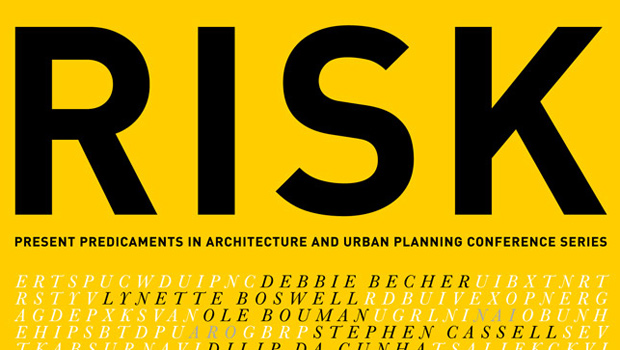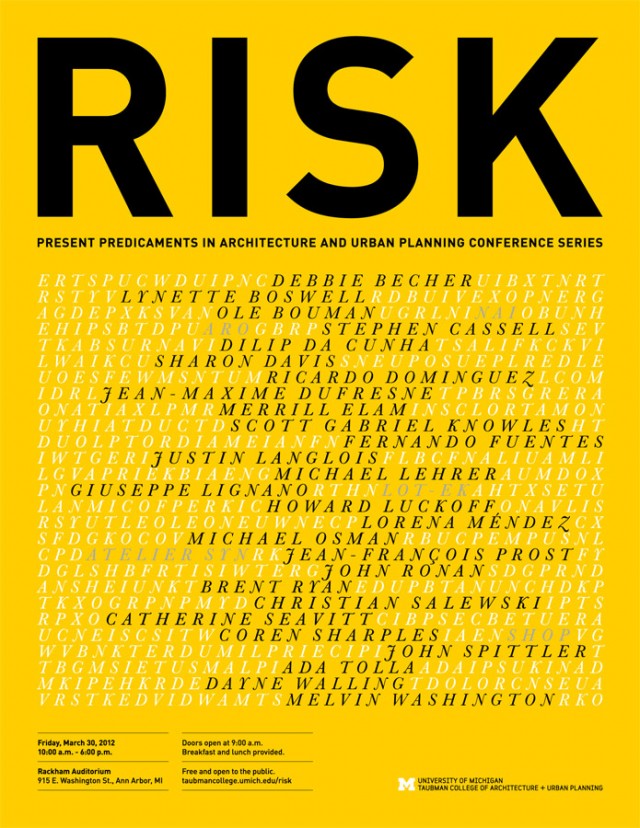RISK, a conference that highlights present predicaments in architecture and urban planning, will explore the intersection between entrepreneurship and practice, taking risks in design, coopting strategies from other disciplines to advance architecture and planning, and in general not being afraid of change.
A dynamic group of speakers will engage the topic in 15-minute presentations, followed by faculty responses to provide commentary and provocations on themes such as personal risk; professional risk; environmental risk; risk of investing in the central city; and design as risk.
Details
March 30, 2012
Rackham Auditorium, 915 East Washington Street, Ann Arbor, MI 48109
Time: 10 AM – 6:30 PM, Doors Open at 9 AM
Justin is presenting on the Design Vulnerability panel, moderated by Walter B. Sanders Fellow, Etienne Turpin, alongside these incredible speakers:
Ricardo Dominguez, Associate Professor, UCSD; Co-Founder, Electronic Disturbance Theater
Jean-Maxime Dufresne & Jean-François Prost, Principals, SYN – Atelier d’exploration urbaine
Fernando Fuentes & Lorena Méndez, Co-founders, La Lleca Colectiva
Here’s the brief for the panel:
From the perspective of design research, the laboratory is a model for investigating urban scenography, interstitial space, transient icons, and the political economies which shape architecture and the city. The lab is not, in this model, the hygienic space portioned from the world to afford a distanced observation; the lab is instead a platform for embedded forms of inquiry, intervention, speculation, and experimentation. These precarious forms of practice are affirmed through design strategies that embolden our experiences of vulnerability at the level of the city, the social, and the ecological. These practices do not attempt to erase vulnerability through design but instead leverage design research and performative experimentation by collaborating with and among various vulnerabilities. The panel considers how practices of accumulating vulnerability offer new models of courage and conviction for post-heroic architecture and design.

